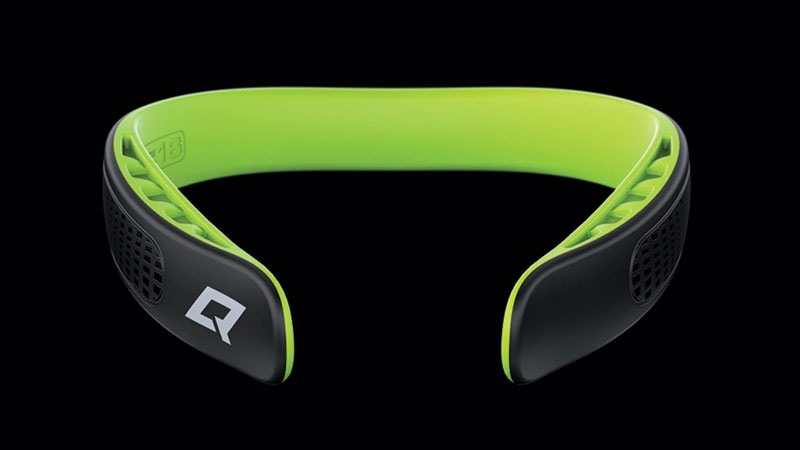
The US Food and Drug Administration (FDA) has cleared a new over-the-counter device designed to protect children aged 13 years and older from sports-related traumatic brain injury (TBI).
The agency granted marketing authorization of the noninvasive device, called Q-Collar (Q30 Sports Science, LLC), a C-shaped collar that applies compressive force to the neck and increases blood volume to help reduce movement of the brain within the cranial space, which may occur because of hits to the head. The device may reduce the occurrence of specific changes in the brain that are associated with brain injury.
"Today's action provides an additional piece of protective equipment athletes can wear when playing sports to help protect their brains from the effects of repetitive head impacts while still wearing the personal protective equipment associated with the sport," Christopher M. Loftus, MD, acting director of the Office of Neurological and Physical Medicine Devices in the FDA's Center for Devices and Radiological Health, said in a statement.
Data from the Centers for Disease Control and Prevention show that from 2006 to 2014, the number of TBI-related emergency department visits, hospitalizations, and deaths increased by 53%, the FDA notes in its release.
In addition, the agency reports that blunt trauma accidents, or accidents that involve being struck by or against an object, particularly when playing sports, are a major cause of TBI. The National Institute of Neurological Disorders and Stroke estimates that up to 3.8 million sports- and recreation-related TBIs occur in the United States annually.
The Q-Collar provides compressive force to the internal jugular veins, which in turn increases the blood volume in the skull's blood vessels. Blunt trauma accidents cause the brain to move, when not restrained, in the skull, the FDA said. An increase in blood volume in those blood vessels causes the brain to fit more tightly inside the skull, which reduces this "slosh" movement. By reducing the movement of the brain within the cranial space, the Q-Collar may aid in the protection of the brain from the effects of head impacts.
The FDA's approval of the device is based on evidence from several studies, including a prospective, longitudinal study in the United States that involved 284 persons aged 13 years or older who were participants on a high school football team.
During the sports season, 139 athletes wore the Q-Collar, and 145 athletes did not. All participants also wore an accelerometer that measured every impact to the head sustained during play. Each athlete underwent an MRI before the sports season and after. These MRI scans were used to generate diffusion tensor imaging (a specialized MRI image) of the brain that allowed researchers to compare structural changes in the participants' brain after a season of play.
Significant changes were found in deeper tissues of the brain involved in the transmission of electrical nerve signals (white matter regions) in 106 of the 145 (73%) participants in the no-Q-Collar group; no significant changes were found in these regions in 107 of the 139 (77%) participants of the group who wore the Q Collar, the FDA reports.
These differences appear to indicate that the device protected the brain. No significant adverse events were associated with use of the device.
The FDA cautions that the Q-Collar does not replace, and should be worn with, other protective sports equipment associated with specific sports activities, including helmets and shoulder pads. It also notes that the device does not protect from all harmful effects of hits to the head or from head trauma.
"Users should take steps to avoid direct impact to the head and neck. Data do not demonstrate that the device can prevent concussion or serious head injury. The Q-Collar should not be used if an individual has not been medically cleared to play contact sports," the FDA said in its statement.
The FDA also notes that the Q-Collar has not been tested and should not be used by athletes with the following conditions:
-
Increased pressure in the skull (including uncontrolled ocular glaucoma)
-
Increased presence of acid in the body or excessive blood alkalinity
-
Open head injury (including in or around the eye) within the past 6 months
-
Pseudotumor cerebri (false brain tumor)
-
Presence of brain or spinal shunt
-
Accumulation of cerebrospinal fluid within the brain
-
Known seizure disorder
-
Known trachea abnormality
-
Known airway obstruction
-
Known carotid hypersensitivity
-
Blood clot in the brain
-
Increased likelihood of blood clotting (coagulation)
-
Collections of small blood vessels in the brain that are enlarged and are irregular in structure
-
Skin injury, rash, or other abnormality on or around the neck
The device can be worn for up to 4 hours at a time and should be replaced after 2 years of active use or upon the product's expiration date, which is listed on the package, whichever comes first, the FDA advises. The Q-Collar is intended for over-the-counter use and will be distributed directly to consumers. However, patients should consult a medical professional if they are unsure whether the Q-Collar is right for them.
For more Medscape Neurology news, join us on Facebook and Twitter.
"device" - Google News
February 27, 2021 at 04:41AM
https://ift.tt/3dPVotM
FDA Clears Device to Protect Kids Against Head Injury - Medscape
"device" - Google News
https://ift.tt/2KSbrrl
https://ift.tt/2YsSbsy
Bagikan Berita Ini















0 Response to "FDA Clears Device to Protect Kids Against Head Injury - Medscape"
Post a Comment